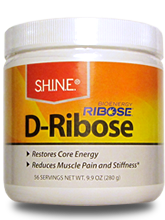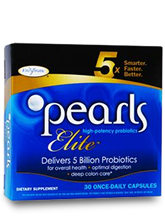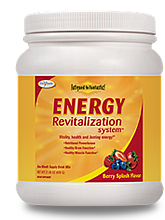Candida - Eliminating Yeast/Fungal Overgrowth
Have Chronic Fatigue Syndrome, Fibromyalgia, or even sinusitis or spastic colon? You probably have overgrowth of yeast or Candida. Though poorly understood by most physicians, addressing this underlying infection can have profound health benefits!
Immune dysfunction (i.e., being more susceptible to infections) is a common part of both Fibromyalgia and CFS, and is becoming more common in the overall population as well. In earlier articles, we have discussed how to diagnose and address chronic viral and antibiotic sensitive infections. The most common and important infections to address in CFS and Fibromyalgia are yeast, fungal and Candida infections (I will address these as a single infection for this article). Unfortunately, standard medicine does not recognize fungal infections unless they affect the nails, skin, hair or groin areas—or they are in the blood and can kill you. Because there is no test to clearly diagnose overgrowth of bowel or sinus Candida, many doctors say it doesn't exist. Reminds me of the little boy who thinks he's invisible because he's covered his eyes…
That there is no blood test does not mean there is no way to tell if you need therapy. I recommend the Candida/yeast/fungal therapy for most people who have ANY of the below problems:
- CFS/ Fibromyalgia—As I have discussed in lectures to thousands of health practitioners, if someone has CFS/FMS, presume the Candida is present and address it.
- Chronic sinusitis—which is usually caused by yeast.
- Spastic colon/irritable bowel syndrome.
When you address the yeast as we'll discuss, not only does the CFS/FMS usually improve, but the sinusitis and spastic colon will often go away as well. As fringe benefits, most of you will find (if you take the Diflucan medication part of the therapy) that your dandruff and feeling like you want to stick your finger in your ear to scratch it will also go away!
How Do I Address the Candida/Yeast?
It takes around 3-5 months to restore balance between the healthy bacteria and the yeast in your body, but most people will be feeling better at ~ 1 month into using the prescription antifungal "Diflucan." Here is your "recipe" for addressing the yeast:
- Begin by avoiding sugar (I will add the magic words "except for dark chocolate," which is a healthy food in moderation). Sugar feeds yeast, so substitute stevia, a healthy natural sweetener.
- Take healthy bacteria (probiotics) to fight the yeast. I recommend probiotic pearls for 3-5 months.
- At the same time, begin an herbal antifungal mix that helps maintain healthy gut flora for 3-5 months.
- After 1 month on the above, add the medication Diflucan 200 mg a day for 6-12 weeks (get the generic form fluconazole. The brand name is $600 for 6 weeks. The generic is available for only $40 for 42 tablets at Consumers Discount Pharmacy, phone 323-461-3606).
For those who would like more detail on the Candida issue, it is discussed at length in my book From Fatigued to Fantastic! (Avery/Penguin Oct 2007). Part of the section from the book is in the article below.
An Overview of Yeast/Candida Infections
I will use the terms yeast, fungi, and Candida interchangeably for this discussion. Fungal overgrowth may suppress the body's immune system. It is suspected that this occurs in part because the bowel yeast infections cause what is called "leaky gut syndrome." This means that food proteins get absorbed into the blood system before they are fully digested. Because of this, your immune system has to complete the digestion process, which often overtaxes it. Many physicians feel that yeast overgrowth causes a generalized suppression of the immune system. In other words, once the yeast gets the upper hand, it sets up a cycle that further suppresses the body's defenses.7
Yeast are normal members of the body's "zoo." They live in balance with bacteria—some of which are helpful and healthy, and some of which are detrimental and unhealthy. The problems begin when this harmonious balance shifts and the yeast begins to overgrow.
Many things can prompt yeast to overgrow. One of the most common causes is frequent antibiotic use. Antibiotics kill off the good bacteria in the bowel along with the bad bacteria. When this happens, the yeast no longer have competition and begin to overgrow. The body is often able to rebalance itself after one or several courses of antibiotics, but after repeated or long term courses—and especially if the body has an underlying immune dysfunction—the yeast can get the upper hand.
Other factors are also important. Studies have shown that animals that are sleep-deprived and/or have increased sugar intake develop immune suppression and bowel yeast overgrowth. Many physicians feel that eating sugar stimulates yeast overgrowth in people as well. So as you prepare your meals, remember—sugar is food for yeast.
Diagnosing Yeast Overgrowth
There are no definitive tests for yeast overgrowth that will distinguish yeast overgrowth from normal yeast growth in the body. In my experience, using Dr. William Crook's yeast questionnaire is still the most reliable way to tell if a person is at risk of yeast overgrowth.
In addition, anyone with ANY of the following criteria should be addressed with antifungals:
- anyone with CFS or Fibromyalgia, OR
- who has chronic nasal congestion or sinusitis, OR
- has spastic colon (gas, bloating, diarrhea and/or constipation), OR
- has been on recurrent or long term antibiotics (especially tetracycline for acne), OR
- who intermittently has painful sores in the mouth (not cold sores on the outer lips) that last for about ten days at a time.
Addressing Yeast Overgrowth
A number of very effective therapies can be used to eliminate a yeast problem. I find that the best approach is to combine dietary changes, natural remedies, and prescription medications.
Natural Yeast Therapies
The most important part of addressing yeast overgrowth is avoiding sugar and other sweets, although I will add the three magic words, "except for chocolate." You can also enjoy one or two pieces of fruit a day, but you should not consume concentrated sugars like fruit juices, corn syrup, jellies, pastry, candy, or honey. Stay far away from soft drinks, which have ten to twelve teaspoons of sugar in every twelve ounces. This amount of sugar has been shown to markedly suppress immune function for several hours. Be prepared to have your CFS/FMS symptoms flare for about one week when you cut sugar out of your diet.
Using stevia as a sweetener is a wonderful substitute for sugar. Despite some misconceptions, stevia is safe and natural, and you can use all you want. There are even cookbooks available for using stevia. The brand of stevia that you choose is very important, however. Most brands of stevia are not filtered and therefore are bitter. The two that won the taste test in our office are made by Body Ecology (1-800-4STEVIA) and Stevita. Ribose, a very effective nutrient for addressing CFS, FMS and heart conditions, is not readily digestible by yeast and is usually well tolerated.
Several books have been written on the yeast controversy and offer additional dietary methods to try. One of the best is The Yeast Connection and the Woman by the late Dr. Billy Crook, a physician who advanced our understanding of CFIDS/FMS considerably.
One of those dietary methods that can help restore balance in the bowel is the intake of acidophilus—that is, milk bacteria, a healthy type of bacteria. Acidophilus is found in yogurt with live and active yogurt cultures. Indeed, eating one cup of yogurt a day can markedly diminish the frequency of recurrent vaginal yeast infections.9 Acidophilus is also available in supplement form, but which brand you use is important. Many brands do not actually contain the amount that the label claims or contain dead bacteria—which do not put up much of a fight against the yeast. I like to use probiotic pearls. The pearl coating acts like a little tank—which protects the milk bacteria as they pass through the acidic environment of the stomach. Without this coating to protect against stomach acid, it is estimated that 99.9% of these yeast fighting bacteria will NOT survive the trip through the stomach. This means that to get the number of healthy bacteria in 1 pearl to your colon, you'd need to eat around 3 gallons of yogurt! Once the pearl hits the alkaline environment of the small intestine, it dissolves and releases the bacteria to fight the yeast. I recommend that you take 2 pearls twice a day for 5 months, after which time many people choose to continue taking one a day for prevention. Although the box claims 1 billion bacteria per pearl, the laboratory assays actually show that these pearls contain 2.4 billion bacteria. If you are on antibiotics (not antifungals), take acidophilus at least three to six hours before or after the antibiotic dose.
Many other natural antifungals can be helpful, but when used individually in a high enough dose to kill the yeast they also irritate the stomach. Because of this I like to combine multiple anti-fungal herbs.
Prescription Therapies for Yeast Overgrowth
It is critical to add a prescription anti-fungal as well, because the natural products only kill yeast in the gut and are not as strong. I recommend that almost all of my CFS/FMS patients use Diflucan (Fluconazole) 200 mg/day for 6-12 weeks. If stool cultures (which are negative in most people who need yeast therapy) show the yeast to be resistant to Diflucan, then your doctor may choose to substitute Nizoral at 200 mg/day for 6 weeks. Nizoral can lower adrenal hormone levels, so if your cortisol is low your doctor should consider adding adrenal support when prescribing Nizoral. I don't use Sporanox because it costs over $600, and if your yeast is resistant to Diflucan, it will usually also be resistant to Sporanox but sensitive to Nizoral. The anti-fungal medication Lamisal is simply NOT effective for Candida.
Nystatin, an antifungal medication, has been helpful in addressing yeast overgrowth in the past. Unfortunately, more and more fungi seem to be developing resistance to nystatin. In addition, nystatin is poorly absorbed, which means that it has little impact on the yeast outside of the bowel. Because of this, I am now using an herbal supplement that helps maintain healthy gut flora instead.
Any effective antifungal can initially make the symptoms of yeast infection worse. In addition, Diflucan can cause liver inflammation, although this is uncommon (Tylenol is more likely to cause liver problems), and I have not seen it be a significant problem in the more than 3,000 patients I've worked with. If you have preexisting active liver disease, you should be cautious about using Diflucan—or not use it at all. The "Anti-Yeast" herbal above also contains lipoic acid, milk thistle extract, and N-Acetyl L-Cysteine, natural supplements that helps to protect and heal the liver.
If symptoms of yeast overgrowth are caused by an allergic or sensitivity reaction to the yeast body parts, symptoms may flare up when mass quantities of the yeast are suddenly killed off. This is called a die-off (Herxheimer) reaction and can occur with addressing any chronic infection. To decrease the risk of this reaction, start your therapy with the acidophilus and a sugar-free diet for a few weeks, followed by the Anti-Yeast herbals for one month before beginning the Diflucan. If symptoms flare up, take just 25-100 mg of Diflucan each morning for the first three to fourteen days. If symptoms recur after you stop the Diflucan, I recommend continuing the medication for an additional six weeks at 200 mg a day. If you cannot get the Diflucan from your physician, the rest of the program will still help, but will not kill off the yeast in the sinuses as the Diflucan will.
Many books on yeast overgrowth advise readers to avoid all yeast in the diet. This advice is based on the theory that an allergic reaction to yeast is the cause of the problem. However, the yeast that is found in most foods (except beer and cheese) is not closely related to Candida, which is the predominant yeast that seems to be involved in overgrowth.
In my experience, trying to avoid all yeast in foods results in a nutritionally inadequate diet and does not substantially help most people. Although a few people do appear to have true allergies to the yeast in their food, they account for fewer than 10% of my patients with suspected yeast overgrowth. These people may benefit from the more strict diet recommended in Dr. Crook's book. Interestingly, once adrenal insufficiency and yeast overgrowth are addressed, most people find that their allergies and sensitivities to yeast and other food products seem to improve or disappear.
Nutritional deficiencies such as low zinc or low selenium may also decrease resistance to yeast overgrowth.10 A good multivitamin powder should take care of these deficiencies. This is simply another example of how all the factors involved in CFS/FMS are closely interrelated.
What if the Yeast Comes Back?
It is normal for yeast symptoms to resolve after therapy. After six weeks on Diflucan, most people feel a lot better. If not, you may have Diflucan-resistant Candida, and a trial of Nizoral may be helpful. However, symptoms may sometimes also recur soon after you stop taking either antifungal. If this happens, I would continue taking Diflucan or Nizoral for another six weeks or for as long as is needed to keep the symptoms at bay. More frequently, people feel better after therapy and stay feeling fairly well. Although many people never need to be re-evaluated for yeast, others need to repeat a course of antifungals after six to twenty-four months, especially after eating too much sugar or taking antibiotics.
The best marker that I have found for recurrent yeast overgrowth is a return of bowel symptoms, with gas, bloating, and/or diarrhea or constipation, vaginal yeast, mouth sores, and/or recurring nasal congestion or sinusitis. If these symptoms persist for more than two weeks, especially if there is also even a mild worsening of the CFIDS/FMS symptoms, it is very reasonable to repeat therapy with six weeks of an herbal supplement that helps maintain healthy gut flora, probiotic pearls, and Diflucan. If a second round of therapy resolves the symptoms, you may opt to repeat this regimen as often as is needed, usually every six to twenty-four months. By using the Anti-Yeast and Probiotic Pearls, however, you may be able to avoid the need for repeated use of antifungals and the possible risk of becoming resistant to them.
Some people find that they need to stay on the antifungals for extended periods of time-years, in some cases—or the symptoms recur. As an alternative, instead of taking the antifungals every day, many people find they can get long term suppression of the yeast by taking 200 mg of Diflucan twice a day, one day each week (for example, each Sunday).
Addressing the yeast is one of the most important parts of addressing CFS/FMS, chronic sinusitis, or spastic colon. Though it takes 5 months to restore balance, you'll be feeling much better after 1 month on the Diflucan anti-fungal medication. If your physician won't prescribe it, see a Fibromyalgia and Fatigue Center physician or a Board Certified Holistic Physician. You'll be glad you did!

Jacob Teitelbaum, M.D. is one of the most frequently quoted post viral CFS, fibromyalgia, energy, sleep and pain medical authorities in the world. He is the author of 12 books including You Can Heal from Long Covid, the best-selling From Fatigued to Fantastic!, Pain Free 1-2-3, The Complete Guide to Beating Sugar Addiction, Real Cause Real Cure, The Fatigue and Fibromyalgia Solution, and the popular free Smart Phone app Cures A-Z. He is the lead author of eight research studies and three medical textbook chapters on effective treatment for fibromyalgia and chronic fatigue syndrome. Dr. Teitelbaum appears often as a guest on news and talk shows nationwide, including past appearances on Good Morning America, The Dr. Oz Show, Oprah & Friends, CNN, and FoxNewsHealth.
Websites: Vitality101.com | EndFatigue.com
Facebook Support Group: Recovering from Fibromyalgia, Chronic Fatigue, and Long COVID
Facebook Page | Instagram



